Month 1:21 (Aviv 21), Week 3:6 (Sheshi/Kippur), Year Day 021
2Exodus 10/40
Gregorian Calendar: Tuesday 11 April 2023
Chag haMatzah VII 2023
The Five Days After Yom haBikkurim
Preparing for the Second Coming & Eternity
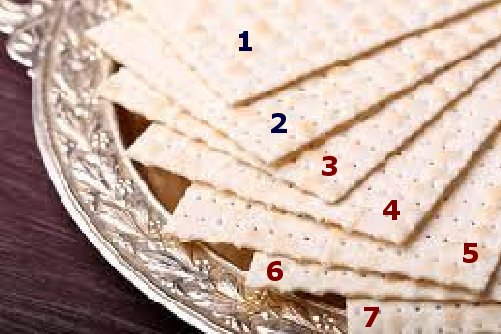
Continued from Part 3
Introduction
Shabbat Shalom and Chag haMatzah sameach kol beit Yisra'el and Mishpachah - welcome to the seventh and last day of the 'Seven Prophetic Days of Purity' or 'Feast of Unleavened Bread', to the last day of the 'Spring Festivals' and to the conclusion of the 'Passover Season'. This is the 21st day of the Month of Blossoms, the only month in the year with a name: Aviv. And though it doesn't at all look flowery outside here because we are so far north, as well as it's having been a long, hard winter (even parts of Canada are warmer than we are right now) - somewhere in the world, and especially in the area where the Garden of Eden was once located, there are flowers in abundance, at least in the northern hemisphere.
Seeking the Face of Elohim in the Purity of the Sevenfold Ruach haQodesh
As you have sought the face of Elohim (God) in your prayers this last week, I hope you found protracted moments of Paradise. Today is a High Sabbath (not the regular sabbath which is tomorrow) and is therefore presided over by the Ruach haShibi'i, the seventh of the seven Ruachot (Spirits) of Elohim (God). All seven Ruachot (Spirits) are present today, a unique opportunity to bathe in the holiness of Yahweh. So just pause for a moment, open your hearts, and accept the gift which our Heavenly Father offers to all those who pursue holiness in His Name, who are prepared to overcome the flesh: invite the sevenfold Ruach (Spirit) into your hearts now and have a true Throne Room experience. For as John the Apostle has written for us:
"Immediately I was in the Ruach (Spirit); and behold, a throne set in heaven, and One sat on the throne. And He who sat there was like a jasper and a sardius stone in appearance; and there was a rainbow around the throne, in appearance like an emerald. Around the throne were twenty-four thrones, and on the thrones I saw twenty-four elders sitting, clothed in white robes; and they had crowns of gold on their heads. And from the throne proceeded lightnings, thunderings, and voices. Seven lamps of fire were burning before the throne, which are the seven Ruachot Elohim (Spirits of God). Before the throne there was a sea of glass, like crystal..." (Rev.4:2-6a, NKJV).
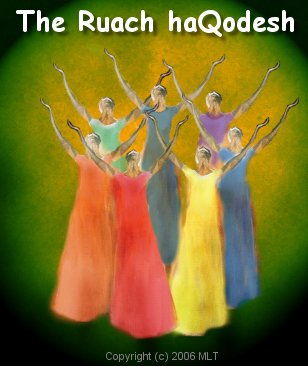
The Individual, Personal Meaning of the Festivals
Our individual lives have seasons, from the day of our conception in our mother's womb at our personal Pesach (Passover), to the day of our physical birth on the second day of Chag haMatzah (Feast of Unleavened Bread) which is Yom haBikkurim (Day of Firstfruits), to the last day of our lives which is this, the seventh day of Chag haMatzah. Everyone's set of seasons is of variable length and content, but all are carefully measured by Yahweh, being tailor-made to our individual needs - taking into account our areas of strength and our areas of weakness, as He reshapes our characters and personalities into His own Image as we allow Him. The most effectual lives are therefore the most surrendered, and the more we resist yielding fully to Him, so certain spiritual seasons of our lives mjst be prolonged by Him to enable us to overcome completely.
Between Private Christians and Community-Minded Members
A similar pattern is at work collectively both on the congregational (your local branch) and national levels (Messianic Israel as a whole), which is why it is so essential to be part of a congregation, for only there can we learn to grow according to the pattern of the summer and autumn festivals. Today, the seventh day of Chag haMatazah, marks an ending - not only of the seasonal cycle, but of the personal cycle; once we have learned and incorporated the lessons of these, the Spring Festivals, we have to move on as a spiritual collective, fulfilling the mandate of the High Priestly Prayer of Yah'shua (Jesus) offered in the Garden of Gethsemane and recorded the Gospel of John, chapter 21, where the same theme is repeated over and over again, emphasising its importance: for the great, overwhelming desire of our Master is that "all of them (us, believers) may be echad (one, united), Father, just as You (Yahweh) are in Me (Messiah) and I (Messiah) am in You (Yahweh)" (John 17:21, NIV). Indeed this theme lies at the very heart of the Johannine writings (the Gospel of John, his three letters and the Book of Revelation), a reason we lay such strong emphasis on the Johannine Way and why my earliest theological training was in the Johannine Writings.
How the Central or Mother Congregation Operates
The person determined to remain a solo Christian - a 'pivate' Christian with no deep commitments or ties to a local body of believers - a spiritual family - can go no further than this the seventh day of Chag haMatazah. You cannot be about building the Kingdom as an evangelist or an apostle or a navi (prophet) without first total commitment to your local fellowship or church which may have sent you out in the first place. This particular congregation, Mishpachah Lev-Tsiyon (MLT), is admittedly a little different as we are both a local, a Priesthood Order and an international congregation - local inasmuch as there are people who live here in close community, and international in the sense that others of its members are located around the world because they are traveling evangelists and teachers or are alone. But it is still their spiritual family, their home, to which they return as often as they can for fellowship and praise, being the Central or Mother Congregation for the whole world. They are all tithe-paying members of this congregation where they attend the Pilgrim Festivals and as many others as they can, receive the ordinances of the Besorah (Gospel), take or renew their covenants annually, give an account of their spiritual and temporal stewardships as ministers (an obligation of the Priesthood - this normally happens in the autumn/fall on the Day of Weighing just before Yim haKippurim), and come to charge their spiritual batteries. They are part of a 'Covenant Community' of which they are 'Covenant Members' where they seek echadness or community oneness in 'Covenant Love'.
The New Covenant Christians/Messianics
This is why, in part, we are known as 'New Covenant Christians' or 'New Covenant Messianics' ('Messianian Evangelicals' is a nickname we have acquired over recent years), a name given us by revelation in 1991 which I want to read to you because it so perfectly dovetails into this last day of the Spring Festivals:
"Let the qodeshim (saints, set-apart ones) be known as NEW COVENANT CHRISTIANS (MESSIANICS) , that I may set them apart from others who call themselves after My Name. See that ye live up to the New Covenant (B'rit Chadashah), saith the Master, and I will endow the the name (New Covenant Christian/Messianic) with power. All those who are investigating this work with sincerity of mind and heart, having been touched by the Ruach (Spirit) thereof, are called unto it, saith the Master. And if they have desires to serve, let them be set apart and fulfil the measure of their calling, receiving the santification of the Ruach (Spirit) each hour. The labourers are few and the vineyard large; nevertheless it is by the few that the great things of the Kingdom have been wrought, and shall be wrought. Therefore all those who have desires born of pure minds and hearts are called. I am setting ablaze the old fields that room may be prepared for the new. Therefore do not seek to build upon the unrealised hopes of the past for such are full of frustration and disappointment. But gather the keys of light of the past and carefully guard them, for with them ye will be able to minister to many distressed souls and thereby work salvation for your own souls too. Turn not back, saith the Master, for the past is infertile and cannot bring forth new seed. I am Yahweh, the Present One, and I am the seed-bearer only of the present. Come unto Me with your minds and hearts prepared, like the freshly tilled fields of the farmer; and if ye will come in faith, nothing doubting, then I shall plant fresh crops. And behold, when the harvest cometh, ye shall be blessed with many sheaves upon your backs and rejoice in your Elohim (God), even the Eternal Father of all. Even so (Ps.126:6). Amen" (Olive Branch 293:16-20).
The Third New Covenant Messianic Cycle Has Begun
If you drive down the road from here you will see the fields either freshly tilled or about to be tilled as Spring gets underway. This is a new beginning for the land and such a new beginning awaits us too now. We have, indeed, already started, and those of you who were around 32 years ago when that revelation was received will perhaps understand how a new cycle has come around since that time, and how the old work is gone. This will be my third and last cycle which I have looked forward to with great anticipation. My task is to oversee the relaunch of this work which I shall do to the very best of my ability and to train up the last generation to take over and complete their tasks. And if you feel the calling, that the revelation I have just read out to you, then please get in contact with us - we look forward to meeting, fellowshipping, and serving with you.
Working Out Our Salvation
The last five days of Chag haMatzah, following Yom haBikkurim, represent, as I said, the rest of our life following the New Birth, symbolised in the ordinance of Water Baptism at Yom haBikkurim which is simultaneously our allegorical dedication (or 'engagement') to Christ. Together these, with Pesach (Passover), constitute the threefold beginning - the alef or alpha - of our salvation (personal and collective) that we are urged by the apostle Paul to "work out...with fear and trembling" all our lives (Phil.2:12). The gap between Pesach and Yom haBikkurim is, as it were, like the 'nine month gestation' period between human biological conception and actual birth. Last week I handed out a chart (see below) which I am going to build upon further in just a moment, so if you would like get that out and refresh your memories, that would be good, as we're going to break that down further:
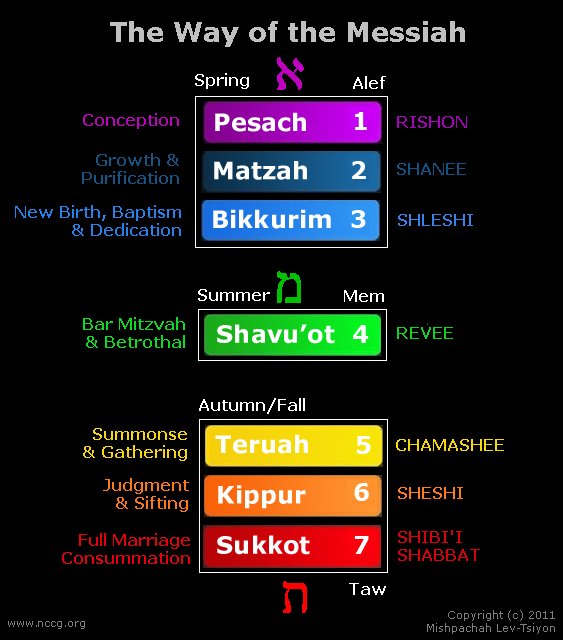 Chart showing how the 7 festivals relate to the Plan of Salvation
Chart showing how the 7 festivals relate to the Plan of Salvation
Five Mysterious Days - What are They?
Do not suppose, though, that the remaining five days of Chag haMatazah are just a sort of 'appendix' with no structure. There is a Ruach Elohim (Spirit) for each of these days, as I have also mentioned, each with a personal Character or Personality, which means that as 'days' they cannot just be identical: yes, they're all days of purification to be sure, but what specifically are they? Priesthood trainees over the last few days have had some deep learning sessions in which those who participated were taught how to interact with the revelations of the nevi'im (prophets), in particular with faces or facets of these revelations, and in particular - the 'Grand Unified Doctrine of Creation' (received in 1988), 545 verses in all, the longest continuous revelation belonging to the Chavurat Bekorot that took me nearly 24 hours to write with only short interruptions in order to drop in on guests, and which left my writing arm permanently weakened, because of the intensity and rapidity in which this word was received.
Understanding the Divine Patterns
Now I mention this only because Yahweh re-formed or re-created the world in Seven Days in much the same way as He reforms or recreates us in His image as we progressively yield control of our lives to Him from the point of our initial salvation (corresponding to the spring festivals) to the last (the summer and autumn/fall festivals). To know what the last five days of Chag haMatzah are all about - or should be about - all we have to do is follow the divine tavnith (pattern) of Creation and the Seven Annual Festivals altogether (that themselves correspond to the seven days of the week) and lay them side-by-side with the seven days of Chag haMatzah. I am going to now hand out a new chart to you (see below) which you can lay alongside the first one:
| Days of Creation |
Chag haMatzah |
Ruachot haQodesh
(Holy Spirits) |
Moedim |
Principles |
| Day #1 - Light |
#1 |
Rishon (first) |
Pesach |
Conception |
| Day #2 - Waters above & below |
#2 Bikkurim |
Shanee (second) |
Matzah |
Purification |
| Day #3 - Land & Plant Life |
#3 |
Shleshi (third) |
Bikkurim |
New Birth |
| Day #4 - Sun, Stars & Planets |
#4 |
Revee (fourth) |
Shavu'ot |
Betrothal, Unveiling |
| Day #5 - Bird & Marine Life |
#5 |
Chamashee (fifth) |
Teruah |
Gathering |
| Day #6 - Animal Life & Man |
#6 |
Sheshi (sixth) |
Kippurim |
Judgment |
| Day #7 - Sabbath Rest |
#7 |
Shibi'i (seventh) |
Sukkot |
Marriage Union |
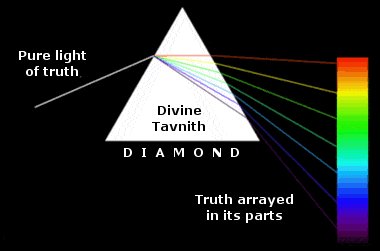
Two Bikkurim's?
The first thing you will probably have noticed and, wondered about, is why the two 'Bikkurim' elements of Chag haMatazah and the Seven Festivals as a whole don't 'match' but you have to remember that the Passover Season consists of eight days, not seven - namely, Pesach plus the seven days of Chag haMatazah, which has to be compressed down, as it were. The Chag haMatazah column is for days whereas the Moedim or Festivals column is for months. Just as there is the actual day of Pesach on Aviv 14, so the eight days of the spring festivals are also called 'Pesach' because they are a part of the 'Pesach Season', in the same way that Washington DC in the USA is both a City and a State, and as Berlin in Germany is both a City and a 'Land'. We have the same here with Arvika as both a Town and a Municipality or Kommun (Commune). A good biblical example would be the Sabbath Day, which lasts a single day and repeats weekly; but there's also the Millennial Sabbath which occurs only once and lasts a thousand years starting on the day Christ returns physically. There are also Sabbatical Years every seven years which last for one year. This multiple use of words is why some get confused and think Chag haMatzah is not a separate moed (appointment) but only a part of Pesach itself, when both propositions are actually true. To understand the Hebrew mind, you must learn to think in this way. Am I making sense?
Making Lifestyle Adjustments in Prophetic Anticipation
Just as at the beginning of Chag haMatazah we anticipate Yom haBikkurim on the second day (two festivals sharing the same 'space-time', since we're observing both simultaneously), so prophetically speaking one who, having made a decision for Christ, immediately begins a life of discipleship and therefore starts making adjustments of his lifestyle through obeying the mitzvot (commandments), so likewise he anticipates the empowerment to do make these adjustments. One of the hardest changes is to adjust to the Luni-Slar Sabbath of the Creation Calendar which forces you to re-evaluate your career and job choices which in this time of impending economic collapse you are going to have to do anyway, so the time is opportune. The restoration of the Creation calendar at this time of fundamental global change is therefore no accident because everything has to change, and is changing, like we're learning to do with less electricity and at some point will have to go off the grid entirely. The challenges are big and require faith and hard work, but they are absolutely worth it, because we are leaving the kingdom of this world for the Kingdom of our Elohim (God). This is another reason we will have to start moving to, and living together, and serving together, in small communities, of which this one is a very young prototype!
Instant vs. Gradual
Now for many the initial decision for Christ, the initial decision to be obedient to Yahweh, and the actual New Birth, may occur so close together as to be virtually indistinguishable existentially from one another. In other words, the spiritual gestation period happens really fast for some. Remember we are using analogies of human development - the gestation period between making a decision for Messiah and being born again does not take '9 literal months' because that's the length of the human biological gestation period, which is more-or-less fixed. These are just analogies to help us understand what's actually going on in the invisible realm, a bit like time-lapse photography to help us see plant growth in motion because they 'do things' at a different pace to us. So the spaces between the 'days' and between the 'moedim' are not fixed time packages when it comes to us as living beings - this is a complex dynamic that will differ from individual to individual, some taking shorter or longer periods of time than others to work out certain aspects of their salvation. And as you know, some of the more 'besetting' sins we struggle with can take a lifetime to sort out for some whereas for others it can happen instantaneously or very quickly, like divine healing itself for which the general expectation seems to be instantaneous because of the mriacles Yah'shua (Jesus) did and because of the miracles of instant healing we occasionally hear of. It's the same with quitting smoking or drugs - some quit instananeously ('quitting cold') but others require time and a longish rehabilitation period. Do you remember one particular miracle in the New Testament - the healing of a blind man by Yah'shua (Jesus) - which took place in two stages when he rubbed moist clay onto his eyes? First he saw people all blurred and said they looked like trees, and then in the second stage, after a second anointing, he could see people with clarity, properly focussed (Mk.8:22-25). Why? Because his faith was the stronger the second time. That's an example of healing and growing in faith in stages.
 Christ healed the blind man in two stages
Christ healed the blind man in two stages
No Private Covenants or Anointings at 'Pentecost'!
So what are Days #3-7 in Chag haMatazah all about? The New Birth itself, which is anticipated at the start of the moed (appointment), then anticipates the one-to-one relationship with Yah'shua (Jesus), which in turn anticipates the communal covenants and experiences represented by the summer festival of Shavu'ot and the autimn/fall festivals of Yom Teruah, Yom haKippurim (Yom Kippur) and Sukkot. And what do these represent? An actual parting of the spiritual veil to see Yah'shua (Jesus) that comes with a fuller Sinai-like anticipation of the 'Pentecostal'-type anointing that, by the way, was not a personal for private use (Pentecostals claim it is personal!) but was communally shared as a single Body (which is why, by the way, there is no such thing as a 'private prayer language'). Sukkot, Weeks, Ekatost or 'Pentecost' has nothing to do with anything private! All the Sinai covenants were Communal Covenants - the National Covenants of Israel.
From Solo to Congregational Christian Life
The gift of the Ruach haQodesh (Holy Spirit) is for Body or congregational ministry involving two or more people, the 'maturity' part of growing up in Christ: the spring festivals represent one-to-one-with-Christ growing-up
and the rest the one-to-many growing up in Christ as an actual Echad allegorical polygamous Bride consisting of (in a congregation) several dozen to several hundred souls) to the worldwide plural Bride (consisting of tens to hundreds of thousands to potentially millions). In a way, the Spring festivals may be seen as allegorically 'monogamous' (for the solo-Christians) and the rest 'polygamous' (for those who are actively involved as part of a spiritual family in a local congregation)! And you can take the latter further to include all those who have ever lived, or will live, a reason why the Apostles' Creed speaks of the 'communion or fellowship of the qodeshim' or 'saints' (set-apart, holy ones) because we are all, in every generation, together even if most are invisible to one another (because they've either not been born yet, live far away, or are dead), something that will change in the higher heavenly sphere where we all worship and fellowship together - I have had several such experiences myself when I have heard heavenly choirs and one in which I could see and feel the presence of the heavenly Chavurat Bekorot or 'Church of the Firstborn' (Heb.12:23), what in recent times the late Mike Heiser called the 'Divine' or 'Heavenly Council'.
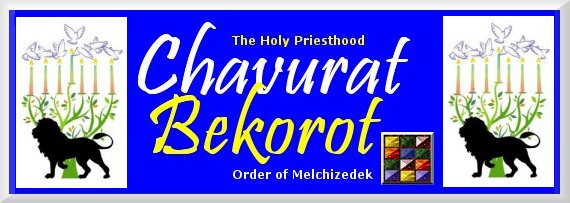
Understanding the Creation Events Properly
So looking at the Table again, we see beyond Shavu'ot (where we communally covenant to obey the Torah, as the Israelites did at Sinai) at which time, in the New Covenant, we also receive the Baptism of the Ruach haQodesh (Holy Spirit). But to make myself clear, I need to point out again, when it comes to timelines, not everyone experiences this as separate from the New Birth. In fact, most, it seems to me, receive both at the same time because they are aspects of the same birthing. This is a big subject which we can unpack further another time. The 'unveiling' at Sukkot corresponds to the 'unveiling' of the sun, stars and moon in the Creation story of Genesis 1 from verse 2 onwards; these had hitherto been invisible from the vantage point of an imaginary person standing on the dry land - on the surface of the earth - though remember this was before man and animals had been created as there was only vegatation at that time. Why had the heavenly bodies been invisible? Because they were concealed by the veil of the waters above - the sun, moon and stars were't created but manifested at this time, the light coming from them in Day #1 when Yahweh created Light and 'separated' it from darkness by causing the earth to spin so that we have daytime and nighttime. This sunlight would have been seen as diffuse from the point-of-view of that imaginary (as yet uncreated) person on the surface (because in the Bible everything in the heavens is a description of things seen from man's vantage point, not Yahweh's). Why was the light diffuse, like looking through a mist or thick fog? Because of the canopy of water refracting the sunlight, each droplet scattering it in multiple directions. The earth's atmosphere at that time must have been like that of a really steamy jungle, and if you have ever been in one of those, you'll know you can't see too far ahead! Or a very steamy shower room without a ventillation fan where you can't see more than a foot or two in front of you.
The Tongues Issue...Again
The last three days of Chag haMatzah correspond to the autumn (fall) moedim (appointments) yet to come. Remember, the last 5 days anticipate these things and are a preparation for them through conscious self-purification in Christ (e.g. Jas.4:8) by making the Pesach-like decision to quit sinning while awaiting the empowerment to do so, first at Yom haBikkurim (the New Birth) and secondly at Shavu'ot (commonly called 'Pentecost') (or both at the same time). And just as a point of clarification, the gift of Tongues - the gifting to be able to supernaturally speak in known human languages not learned the natural way through hard study and practice - isn't something everyone is supposed to get at Shavu'ot - it's a gift only for some (1 Cor.12:8-11), and then only for evangelism and not imaginary self-edification (in private or public) which does not fit the divine tavnith or pattern. Remember, remember what Yah'shua (Jesus) said, "When you pray, don't battalogeo like the heathen" (Mt.6:7); battalogeo is a Greek word which means don't "stammer, stutter, babble, make baby sounds or speak gibberish" because that's what the heathen, pagans or goyim do. When Christians do just that, they are behaving like the heathen, irrespective of what they call it or whatever appeal they may make to Scripture in self-justification.
Mutilating Matthew 6:7
Now if that translation is unfamiliar to you, I am not all surprised because most English versions mutilate the word battalogeo. Though some translations correctly get over some of the sense of battalogeo they minimise the impact of what the word is actually saying for fear of upsetting the 279 to 305 million Pentecostals and Charismatics around the world. Most translations try to make as broad a denominational appeal so as to be able to sell lots of Bibles. 4.5 per cent of the world population is, after all, a very large number of potential customers. So what have the translators done? Here is a sample of a variety translations and how they render battalogeo:
- 1. "use vain/useless repetitions" (KJV, NKJV, ASV, CLNT)
- 2. "meaningless repetition" (NASB, NASU)
- 3. "heap up empty phrases" (NRSV, ESV)
- 4. "pile up meaningelss phrases" (Barclay)
- 5. "rattle off long prayers" (JPB)
- 6. "pray by idle rote" (Moff.)
- 7. "multiply words" (HRV)
- 8. "babble on and on" (JNT, NEB, NLT)
- 9. "recite the same prayer over and over" (JB)
- 10. "keep on babbling" (NIV)
- 11. "babble on and on long-windedly, vacuously without direction" (OJB)
- 12. "pile up a heap of jumbled words" (KNT)
- 13. "be chatterers" (AENT)
- 14. "use a lot of meaningless words" (GNB)
- 15. "talk on and on" (CEV)
- 16. "foolish repetitions" (Vatican 1209)
Of the best known English translations the NIV, JNT, NEB and NLT probably come closest: don't babble on and on vacuously without direction or meaning, like infants do before they have learned how to speak - to be able to articulate words and learn vocabulatry and grammar. That's Yah'shua's (Jesus') very clear instruction on how we should not pray. So, when you pray in public or in private, "don't stammer, stutter or babble gibberish like the heathen!". Speak your native language clearly and articulately. The way to spiritual edification does not involve effortless stammering for whom such somes naturally to babies making lots of noises: it comes from being in right-relationship with Christ as represented by the spring festivals!
 We are told not to babble on and on vacuously in gibberish without direction or meaning
We are told not to babble on and on vacuously in gibberish without direction or meaning
What We are to Anticipate in the Future During Chag haMatazh
Now I appreciate that for those of you who are new to this ministry all I have hitherto been talking about today may itself all sound like gobbledegook because it is so unfamiliar to you. Time and practice make perfect. This is why constant study, prayer and application are required which is what Chag haMatazah is all about! It's why we 'do' it, and talk about it, each year. We often do - or put into action - before we understand and have faith that the understanding will come - the same principle is reiterated at Shavu'ot when communal covenants are taken together with all the qodeshim, saints, set-apart ones). So what have we been anticipating for later - for the future - during the last four days of Chag haMatazah? The anointing of Shavu'ot, the communal experience of Covenant-Love received and shared (and not just the private love-relationship we individually have with our Heavenly Father through His Son Yah'shua/Jesus), leading to the fullness, grand consummation, and full allegorical marriage of the Bride to Messiah at Sukkot viâ judgment at Yom haKippurim and before that the Second Coming...don't all regenerated believers rightly anticipate the Second Coming? Well it's a package of three festivals, one of them (Sukkot) seven days long, just like Chag haMatazah!
Approaching the Consummation of History
Those who don't anticipate the Saviour's Return, the Judgment of the world and the Great Consummation usually aren't born again...aren't regenerated by the Ruach (Spirit), don't obey all the mitzvot (commandments) and don't consciously seek to live the holy life, because such things are little part of their active daily lives. That is what these festivals teach us we must do - how to order our lives spiritually and temporally. Indeed we can, and should, use this festival grid to model our marriages on too, and in fact every aspect of our lives. Thus we are purifiying our lives, not just during these days of Chag haMatzah, but every day, so that we can be prepared for the consummation of history, which we are rapidly approaching, and so make ourselves worthy to partake in the Marriage Supper (Feast) of the Lamb (Rev.19:9).
Things Changing Very Quickly
This has been a very different Chag haMatazah for many of you who have sensed the inner spiritual changes as well as being aware of the big outer changes in the world. Everything is changing at breakneck speed now - I can barely keep up with the news, but as I try, at least in what I discern to be the important areas, Yahweh reminds me of prophecies given many years ago that are now being fulfilled, and there are a lot of them, especially about China, Russia and Vladimir Putin's rôle as an end-time 'Cyrus', Ukraine, the USA and - importantly - Texas which yesterday created a gold-backed digital currency to replace the Federal Reserve Dollar which is totally controlled by the élites. This is a big move. So pray for Texas, please! Yahweh has an important rôle for that State in the last days.
Conclusion
Though Chag haMatazah, along with the Passover Season and Spring Festivals as a whole, ends at sunrise tomorrow, we will assemble together again tomorrow when I will deliver an important message about the Antichrist and what is happening with him in the world right now - a Status Report, if you like, that is a 'follow-on' to this Chag haMatzah message. I had originally planned to share this with you today but felt it best heard after the spring festivals so as not to be distracted from the spiritual current we have been in the last few days. In fact, I have several things to share with you then so please join me tomorrow afternoon! Blessings in the Name of Yah'shua (Jesus) our Messiah be upon you all! Amen.
Continued in Part 2 (Antichrist & Second Coming)

 V411
V411
|


